Discover 20 hidden attractions, cool sights, and unusual things to do in Zaragoza (Spain). Don't miss out on these must-see attractions: Aljafería, Museum, and Cathedral of the Savior of Zaragoza. Also, be sure to include Iglesia de San Pablo in your itinerary.
Below, you can find the list of the most amazing places you should visit in Zaragoza (Aragon).
Table of Contents
Aljafería
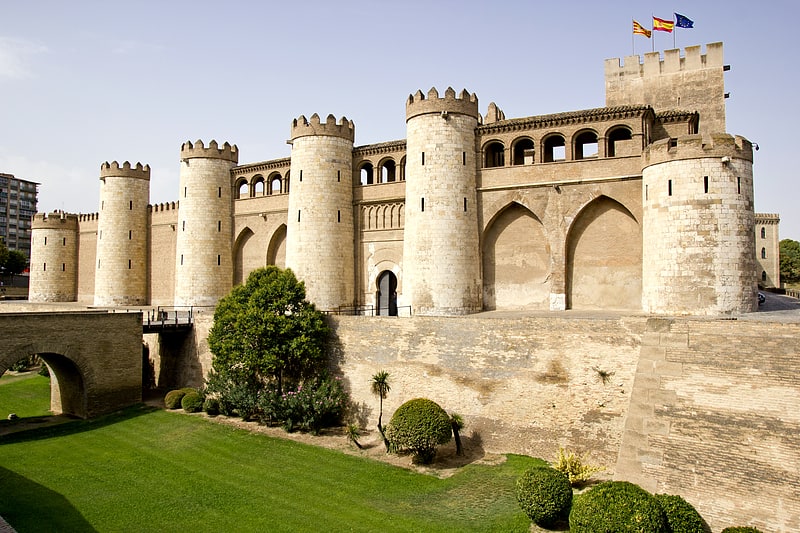
Medieval Islamic palace/Parliament seat. The Aljafería Palace is a fortified medieval palace built during the second half of the 11th century in the Taifa of Zaragoza in Al-Andalus, present day Zaragoza, Aragon, Spain. It was the residence of the Banu Hud dynasty during the era of Abu Jaffar Al-Muqtadir. The palace reflects the splendor attained by the Taifa of Zaragoza at its height. It currently houses the Cortes of the autonomous community of Aragon.
The structure is the only conserved large example of Spanish Islamic architecture from the era of the taifas (independent kingdoms). The Aljafería, along with the Mosque–Cathedral of Córdoba and the Alhambra, are the three best examples of Hispano-Muslim architecture and have special legal protection. In 2001, the original restored structures of the Aljafería were included in the Mudéjar Architecture of Aragon, a World Heritage Site.
The style of ornamentation of the Aljafería, such as the use of mixtilinear arches and springers, the extension of arabesques over a large area, and the schematisation and progressive abstraction of the yeserias of a vegetal nature, strongly influenced Almoravid and Almohad art in the Iberian Peninsula. The shift in decoration towards more geometric motifs is at the basis of Nasrid art.
After the reconquest of Zaragoza in 1118 by Alfonso I of Aragón, it became the residence of the Christian kings of the Kingdom of Aragón. It was used as a royal residence by Peter IV of Aragón (1319–1387) and, in 1492, it was converted into the palace of the Catholic Monarchs. In 1593 it underwent another restructuring that would turn it into a military fortress, first according to Renaissance designs (which today can be seen in its surroundings, moat, and gardens) and later for quartering military regiments. It underwent further restructuring and damage, especially with the Sieges of Zaragoza of the Peninsular War, until it was finally restored in the 20th century.
The palace was built outside Zaragoza's Roman walls, in the plain of the saría. With urban expansion over the centuries, it is now inside the city.[1]
Address: Calle de los Diputados, s/n, 50003 Zaragoza
Museum
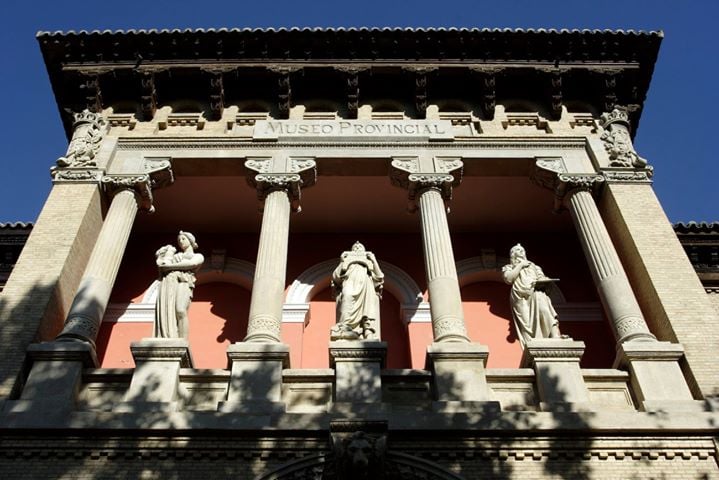
Museum in Zaragoza, Spain. Zaragoza Museum is a national museum in the Plaza de los Sitios in the city of Zaragoza in Spain. Its collections range from the Lower Palaeolithic to the modern era and include archaeology, fine arts, ethnology and Iberian ceramics.
It is the city's oldest museum and its main building - housing the fine arts and archaeology display - is the Neo-Renaissance structure designed for the Spanish-French Exhibition of 1908 by Ricardo Magdalena and Julio Bravo. Its design was inspired by the Patio de la Infanta, home of the Renaissance merchant and patron Gabriel Zaporta. The museum also has an ethnology display at the Casa Pirenaica, a ceramics display at the Casa de Albarracín in the Parque José Antonio Labordeta and the remains of Colonia Celsa in Velilla de Ebro.[2]
Address: Plaza de los Sitios, 6, Zaragoza
Cathedral of the Savior of Zaragoza

Also known as: Catedral del Salvador de Zaragoza
Grand cathedral with medieval tapestries. The Cathedral of the Savior or La Seo de Zaragoza is a Roman Catholic cathedral in Zaragoza, in Aragon, Spain. It is part of the World Heritage Site Mudéjar Architecture of Aragon.
The cathedral is located on the Plaza de la Seo and is commonly known as La Seo (Aragonese for "see") to distinguish it from the nearby El Pilar, whose name (pillar) is a reference to an apparition of Mary in Zaragoza (also known as Saragossa). They both share co-cathedral status in metropolitan Zaragoza.[3]
Address: Plaza de la Seo, 4, 50001 Zaragoza
Iglesia de San Pablo
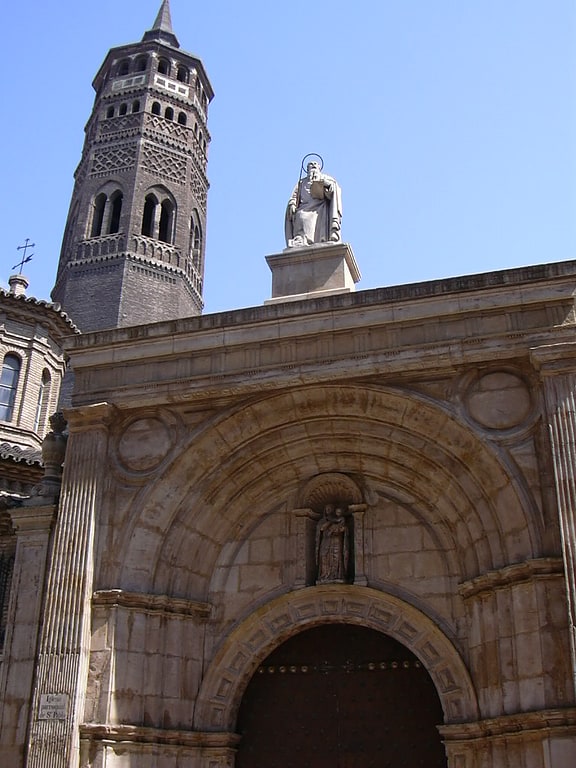
Church dating from the 13th century. San Pablo is a church in Zaragoza, Spain. Its original Gothic-Mudéjar building dates to the late 13th/early 14th-century; later it was enlarged and modified several times.[4]
Address: Calle San Pablo, 42, 50003 Zaragoza
Monument to Agustina de Aragón
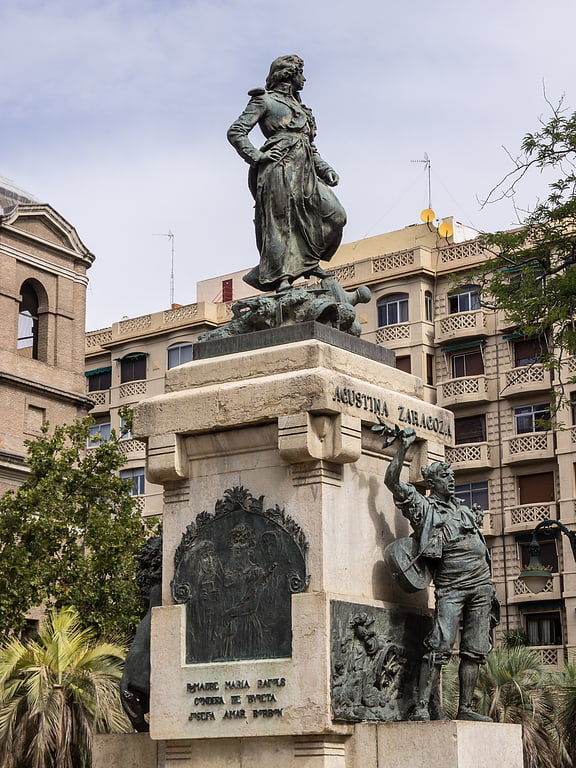
Agustina Zaragoza y las Heroínas or the Monument to Agustina de Aragón is an instance of public art in Zaragoza, Spain. Designed by Mariano Benlliure, it consists of a bronze statue of Agustina de Aragón topping off a stone pedestal that displays two other sculptural groups and a number of reliefs. The latter subsidiarily pay homage to another six heroines of the Zaragozan theatre of the Peninsular War.[5]
Plaza de Toros de Zaragoza
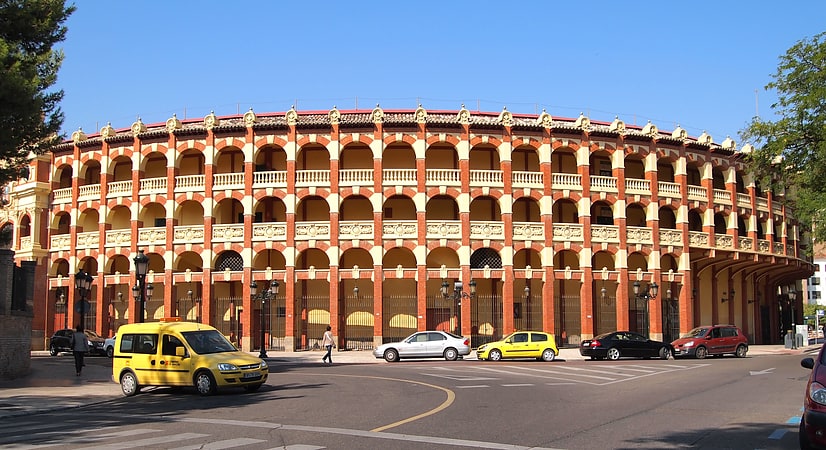
Also known as: Plaza de toros de Zaragoza
Bullring in Zaragoza, Spain. Plaza de toros de Zaragoza is a bullring in Zaragoza, Spain. It is currently used for bull fighting. The stadium holds 10,072 spectators. It was opened in 1764.[6]
Address: Calle Vicente Gomez Salvo, 58, 50004 Zaragoza
Museo Goya

The Museo Goya - Colección Ibercaja - Museo Camón Aznar is a fine arts museum in Zaragoza, Spain. It opened in 1979 under the name Museo Camón Aznar, after the art collector from the city who had contributed the nucleus of its collection.
The museum collection includes over 1,000 works, with around 500 on display. It was given its current name on the 26th of February 2015 after the addition of the Ibercaja collection and the works held by the Real Sociedad Económica Aragonesa de Amigos del País.[7]
Address: Calle Espoz y Mina, 23, 50003 Zaragoza
Puente de Piedra

Stone bridge spanning the Ebro River. The Puente de Piedra is a bridge across the river Ebro in Zaragoza, Spain.
The Puente de Piedra is also called the Bridge of Lions because since 1991 four lions (symbols of the city) have been placed on the pillars at each end of the bridge. The lion statues were designed by Francisco Rallo Lahoz.[8]
Address: Puente de Piedra, 50014 Zaragoza
Bridge Pavilion
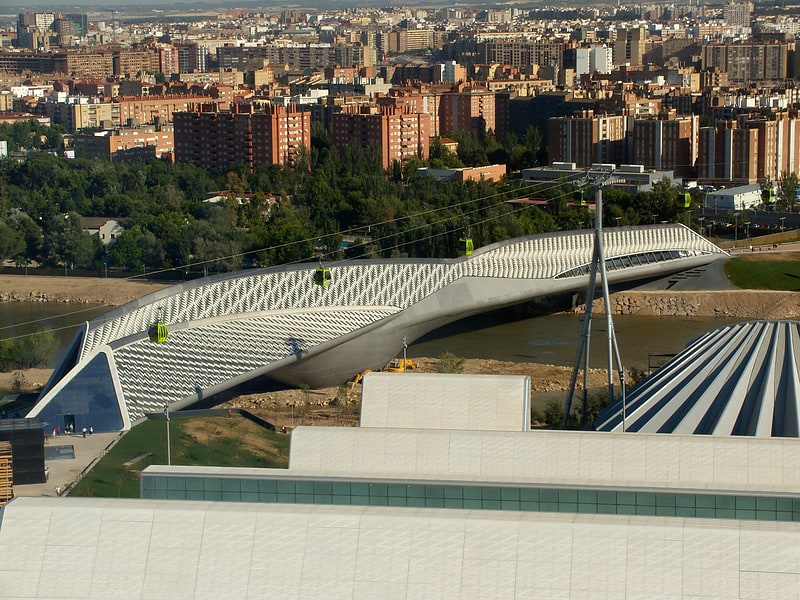
Also known as: Pabellón Puente
Bridge in Zaragoza, Spain. The Bridge Pavilion is a building designed by British-Iraqi architect Zaha Hadid that was constructed for the Expo 2008 in Zaragoza as one of its main landmarks. It is an innovative 280-metre-long covered bridge that imitates a gladiola over the river Ebro, connecting the neighbourhood of La Almozara with the exposition site, and thus becoming its main entrance. The new bridge is, at the same time, a multi-level exhibition area; 10,000 visitors per hour were expected to frequent the Pavilion during world exhibition.
Hadid chose fibre glass reinforced concrete from Austrian company Rieder to envelope the bridge: she covered the outer skin of the building with 29,000 triangles of fibreC in different shades of grey.
During the Expo 2008, the Bridge Pavilion hosted an exposition called Water – a unique resource, designed by Ralph Appelbaum Associates. When the Expo was over, the building was purchased by the local savings bank Ibercaja to use it as a site for expositions.[9]
Address: Av. Ranillas, s/n, 50003 Zaragoza
Church of Santa Engracia de Zaragoza
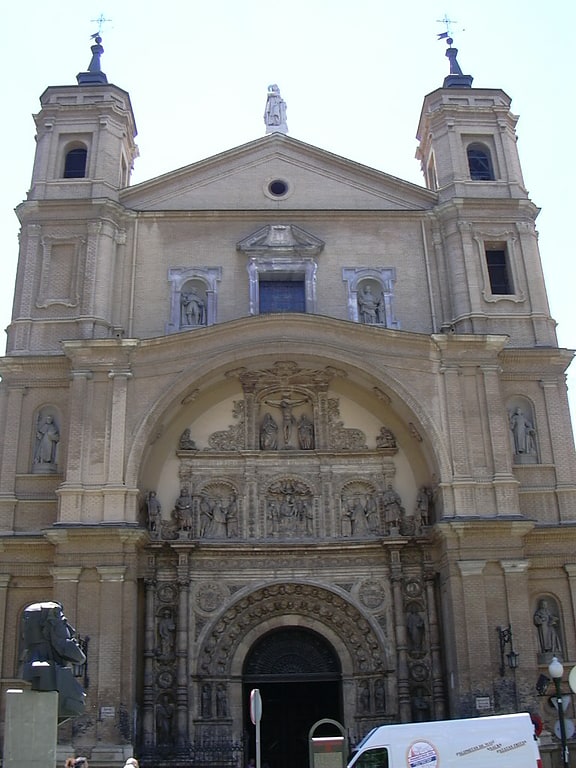
Also known as: Basílica de Santa Engracia
Basilica in Zaragoza, Spain. The Church of Santa Engracia de Zaragoza is a basilica church in Zaragoza, Spain. It was built on the spot where Saint Engratia and her companions were said to have been martyred in 303 AD. The Basilica of Santa Engracia is located at Plaza de Santa Engracia.[10]
Address: Calle Tomás Castellano, 1, 50001 Zaragoza
Magdalena
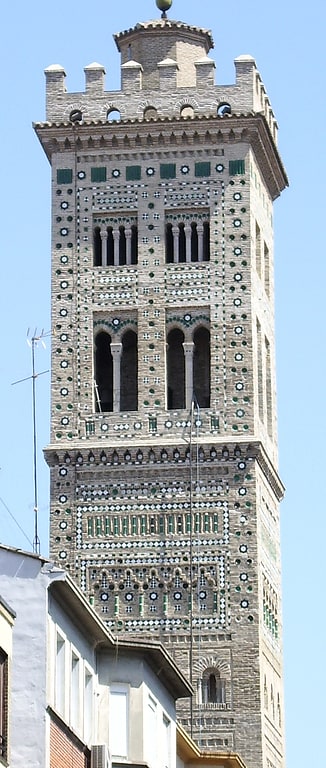
Parish in Zaragoza, Spain. Santa María Magdalena is a church in Zaragoza, Spain, built in the 14th century in Mudéjar style.[11]
Address: Plaza la Magdalena, 3, 50001 Zaragoza
Roman Theater
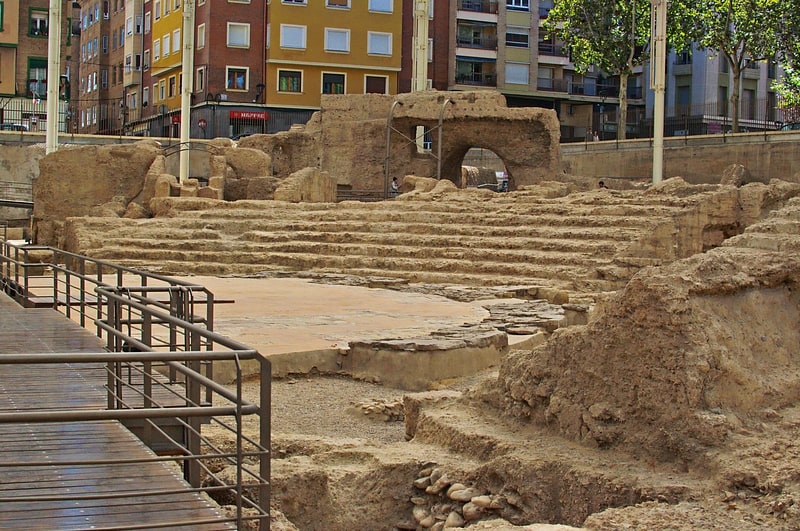
The Roman Theater of Zaragoza is a theater from the Roman era, built in the first half of the 1st century AD, in the Age of Tiberius and Claudius. It had a capacity of 6,000 spectators and followed the model of the Theatre of Marcellus in Rome. It was active until the third century.
Its materials were used to build walls and other buildings. In 1973, archeological excavations uncovered it. It can currently be visited within the framework of the Cesaraugusta Theater Museum. It was declared Bien de Interés Cultural in 2001.[12]
Address: C/ Verónica, 50001 Zaragoza
Parque Grande José Antonio Labordeta
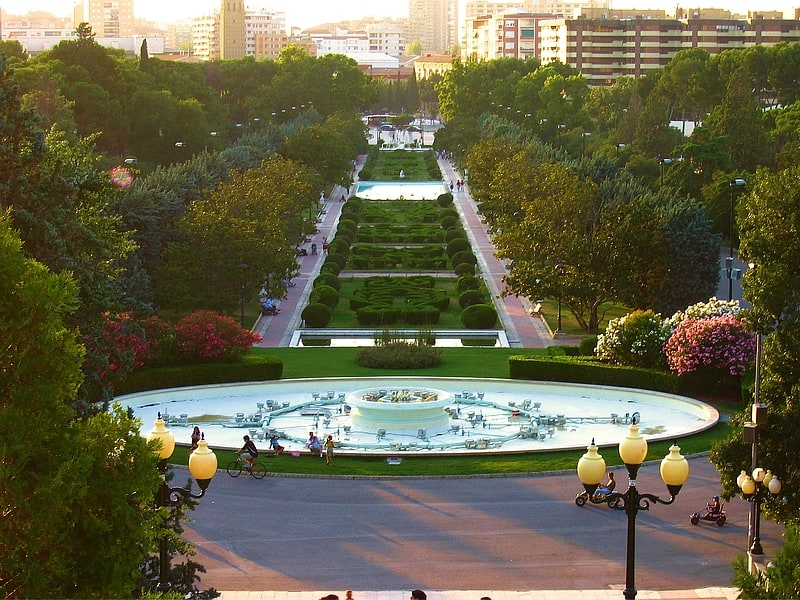
José Antonio Labordeta Grande Park is a park in the city of Zaragoza inaugurated in 1929 and located in the Universidad district. Since its inauguration and for 81 years it was officially called Primo de Rivera park and popularly as Grande park, but after the death of the singer-songwriter and politician José Antonio Labordeta in 2010 the City Council of Zaragoza baptized this park with his name.
Address: Paseo Isabel La Católica, s/n, 50012 Zaragoza
Monastery of Comendadoras Canonesas del Santo Sepulcro
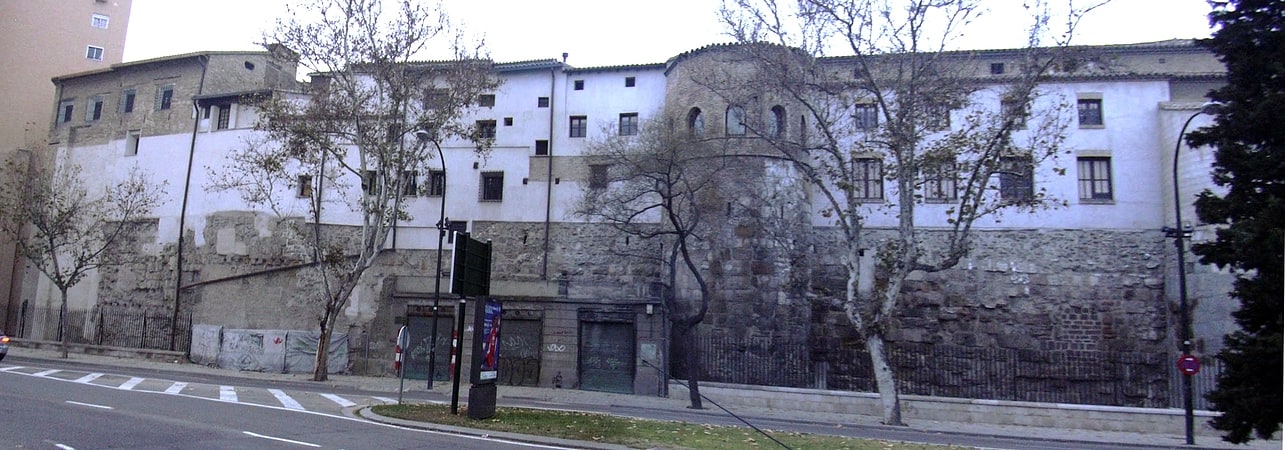
Also known as: Monasterio de la Resurrección del Santo Sepulcro
Monastery in Zaragoza, Spain. The Monastery of Comendadoras Canonesas del Santo Sepulcro is a monastery located in Zaragoza, Spain. It was declared Bien de Interés Cultural in 1893.[13]
Address: Plaza San Nicolás, 3, 50001 Zaragoza
San Gil Abad
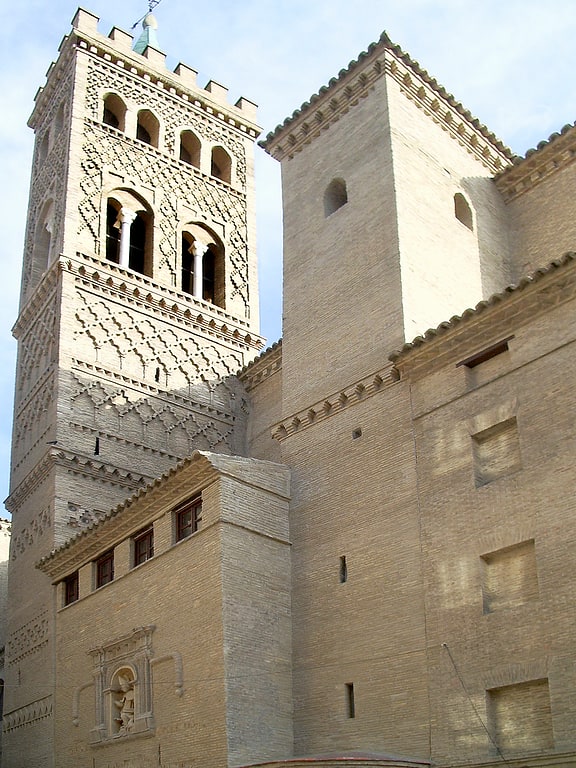
San Gil Abad is a church in Zaragoza, Spain.[14]
Address: Calle Don Jaime I, 13, 50001 Zaragoza
Puerta del Carmen
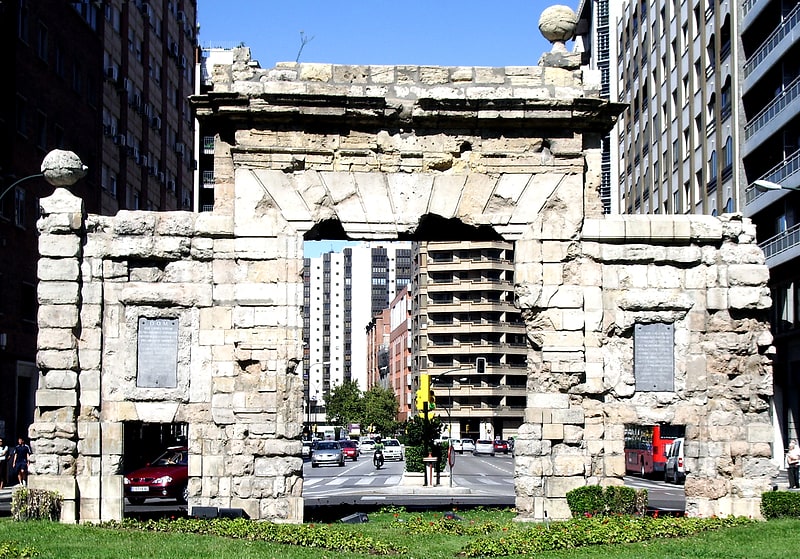
Monument in Zaragoza, Spain. The Gate of Carmen is a gate located in Zaragoza, Spain. It was declared Bien de Interés Cultural in 1908.[15]
Address: Paseo de Maria Agustin 15, 50004 Zaragoza
Cathedral-Basilica of Our Lady of the Pillar
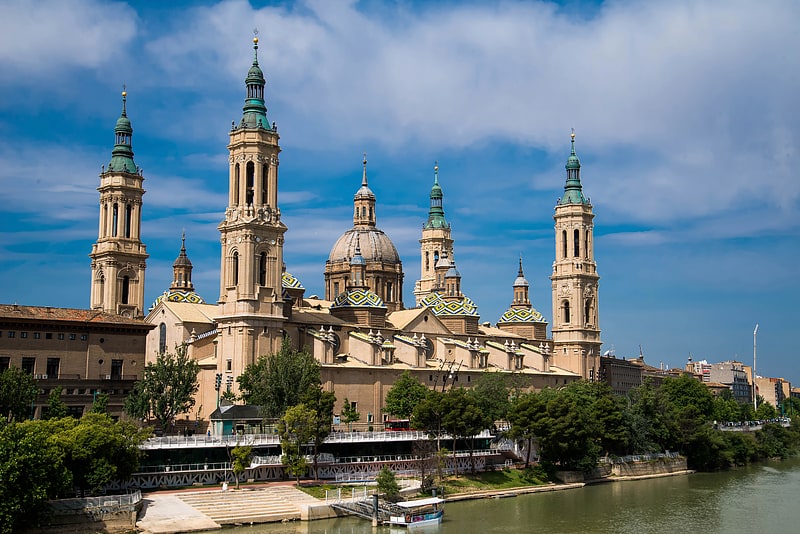
Also known as: Catedral-basílica de Nuestra Señora del Pilar de Zaragoza
Church in Zaragoza, Spain. See Basilica of Our Lady of the Pillar for the church in Buenos Aires
The Cathedral-Basilica of Our Lady of the Pillar is a Roman Catholic church in the city of Zaragoza, Aragon. The Basilica venerates Blessed Virgin Mary, under her title Our Lady of the Pillar praised as "Mother of the Hispanic Peoples" by Pope John Paul II. It is reputed to be the first church dedicated to Mary in history.
Local traditions take the history of this basilica to the dawn of Christianity in Spain attributing to an apparition to Saint James the Great, the apostle who is believed by tradition to have brought Christianity to the country. This is the only reported apparition of Mary to have occurred before her believed Assumption.
Many of the kings of Spain, many other foreign rulers and saints have paid their devotion before this statue of Mary. Saint John of the Cross, Saint Teresa of Ávila, Saint Ignatius of Loyola, and Blessed William Joseph Chaminade are among the foremost ones. The Basilica of Our Lady of the Pillar is one of two minor basilicas in the city of Zaragoza, and is co-cathedral of the city alongside the nearby La Seo de Zaragoza. The architecture is of Baroque style, and the present building was predominantly built between 1681 and 1872.[16]
Address: Plaza del Pilar, s/n, 50003 Zaragoza
Mercado Central
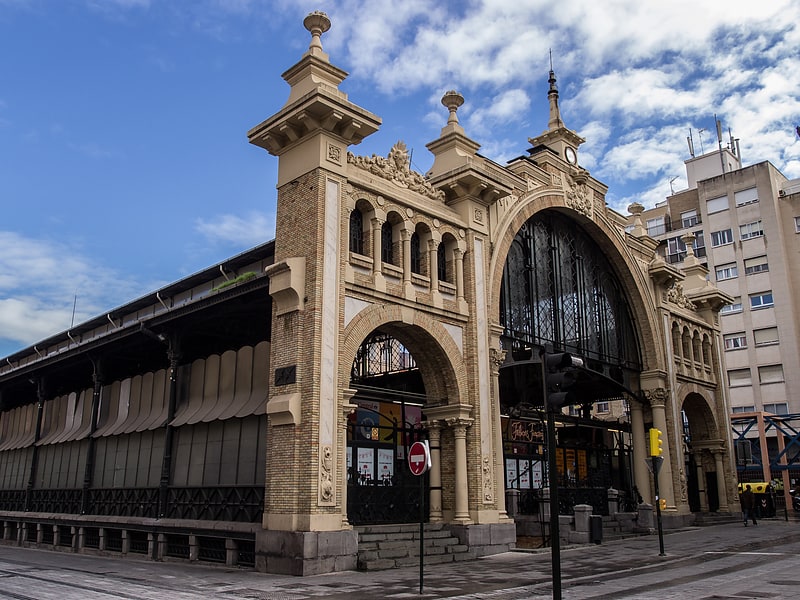
The Central Market of Zaragoza or Lanuza was designed in 1895 by the Aragonese architect Félix Navarro Pérez to replace the traditional one that was held outdoors in the old market square. It was commissioned by the Sociedad Nuevo Mercado de Zaragoza and in 1903 it was finished. It has been a National Historic Monument since 1978 and a Site of Cultural Interest since 1982.
The building, built with an iron structure, has a functional and harmonious design and a rectangular floor plan. Félix Navarro had been to Paris and knew Les Halles, a work that undoubtedly influenced him when designing the central market. He planned a rectangular plan with three naves, the central one wider and higher. The whole structure rests on a semi-basement that was used as a warehouse and that on the outside has the appearance of a plinth.
The materials used combine stone and iron and glass architecture. The doorways have neoclassical elements (arched galleries, sculptural decoration of allegories of agriculture, hunting, fishing and transport, medallions, pinnacles with fruit trees) alongside wrought iron grids. The capitals of the iron columns have original shapes, such as baskets, acanthus leaves, neoclassical palms and fruit clusters.
In the period 2018-2019, the City Council of Zaragoza is proceeding to its modernization rehabilitation, being the most important work carried out in the building since its inauguration. The Project is directed by José Antonio Aranaz, Municipal Architect and has been drafted by the technical services of the state company MERCASA.
February 5, 2020.
Address: Av. Cesareo Augusto s/n, 50003 Zaragoza
San Miguel de los Navarros
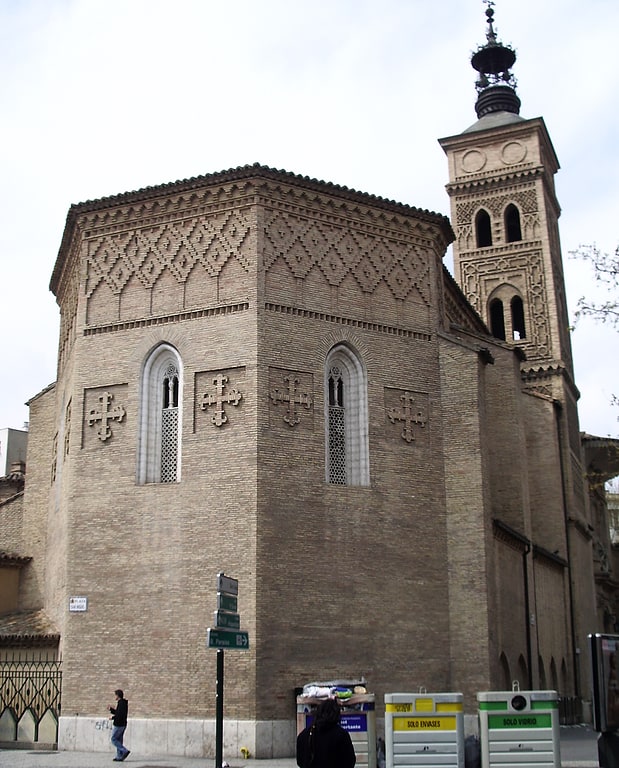
Parish in Zaragoza, Spain. San Miguel de los Navarros is a church in Zaragoza, Spain. It has a single nave with side chapels, a polygonal apse and a bell tower, located at the northern side.
The church and its bell tower are notable examples of Mudéjar architecture. The bell tower has three floors with decorated brickwork, and is surmounted by an 18th-century spire, similar to that of the Torre de la Seo.
The brickwork façade and the choir date to the Baroque period. The Renaissance artist Damian Forment executed the polychrome wood sculpture at the high altar.[17]
Address: Plaza San Miguel, 4, 50001 Zaragoza
Third Millennium Bridge
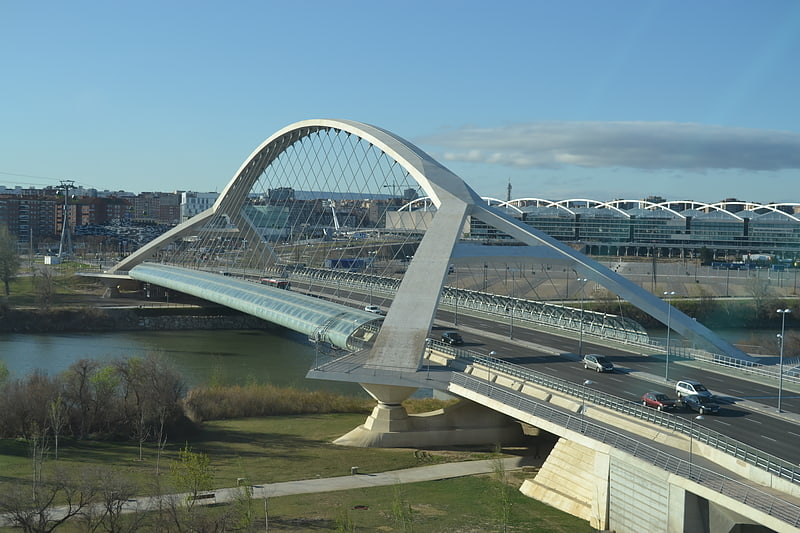
Tied-arch bridge in Zaragoza, Spain. The Third Millennium Bridge is a bow-string bridge in Zaragoza, Spain. It crosses the Ebro.[18]